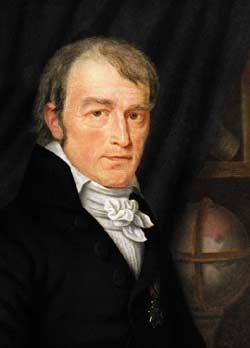Johann Gottlieb Friedrich von Bohnenberger facts for kids
Johann Gottlieb Friedrich von Bohnenberger (born June 5, 1765 – died April 19, 1831) was an important German scientist. He was an astronomer and a mathematician. Bohnenberger was born in a place called Simmozheim in Württemberg, which was a part of Germany back then.
He went to study at the University of Tübingen. In 1798, he became a professor there. This meant he taught mathematics and astronomy to students.
Contents
What Did Bohnenberger Do?
Johann Bohnenberger made several important contributions to science. He wrote books and invented a special machine.
His Books and Writings
Bohnenberger wrote several books that helped people learn about science. Here are some of them:
- Anleitung zur geographischen Ortsbestimmung (Guide to geographic locations), published in 1795. This book helped people figure out where they were on Earth.
- Astronomie (Astronomy), published in 1811. This book was about the study of stars, planets, and space.
- Anfangsgründe der höhern Analysis (Initial reasons of higher analysis), published in 1812. This book was about advanced mathematics.
The "Machine" (Gyroscope)
In 1817, Bohnenberger explained how a special device worked. He simply called it a "Machine." Today, we know this machine as a gyroscope. A gyroscope is a spinning wheel or disc that helps things stay balanced or figure out direction.
Other scientists, like Johann Wilhelm Gottlob Buzengeiger, built examples of Bohnenberger's "Machine." Another scientist, Johann Friedrich Benzenberg, had even talked about Bohnenberger's invention in letters as early as 1810.
Where Did Bohnenberger Die?
Johann Bohnenberger passed away in Tübingen, the same city where he taught at the university.
Bohnenberger's Legacy
To honor his work, a lunar crater on the Moon is named after him. It is called Bohnenberger.
See also
- Bohnenberger electrometer
- Kater's pendulum


